App development costs are always among the top concerns of app builders, whether they make an app in-house or outsource it. How much does it cost to make an app? Is the figure fixed or variable on different projects? In this blog post, we’ll help you envisage how app development costs are often calculated and how to optimize spendings on app building.
What Are The Factors That Go Into App Cost?
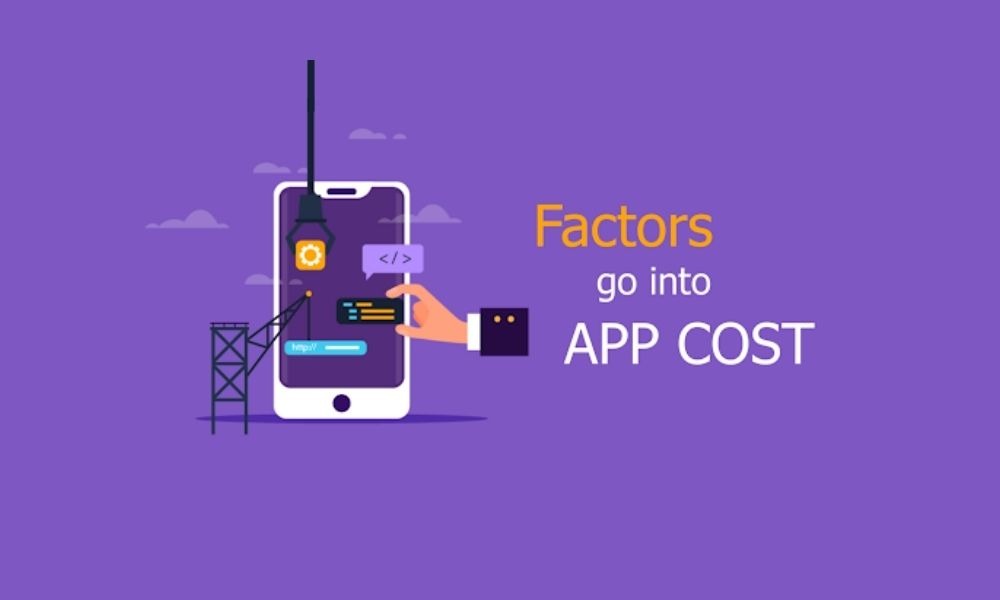
An app cost is influenced by assorted cost-driving criteria. First of all, an app itself constitutes multiple software and hardware features, thus little wonder that its expense will be under profound impacts of designing and developing these functions:
- Type of app (e.g. eCommerce, social networking or video streaming);
- Visual design and objects such as 2D or 3D graphics, animation or wireframe;
- App functionality like user profile, push notifications, social media sharing, third-party integration or data security;
- Supported platforms (i.e. iOS or Android), devices and other hardware components (e.g. the phone’s camera).
However
The real app development process isn’t only limited to such components. The total cost accordingly extends to other crucial factors including:
- Problem detection and solution;
- Maintenance and upgrades;
- Industry maturity and business scale;
- Those involved in the development team – normally a business analyst, a project manager, UX/UI designers, programmers and test engineers;
- Internal or external hiring and hourly rates by region;
- Marketing and advertising after the product launch;
- License for software used to build an app;
- App store fees.
Each deliverable consists of unique attributes, hence accompanying different costs. To answer the question of how much your company must pay for an app, you need to determine which properties your app includes.
An Overview of the Average Cost of an App
Before calculating the average cost of creating an app, you should determine whether the app development project will be allocated to in-house employees or an outsourcing development company. Inevitably, provided the internal workforce has sufficient experience to handle a whole project, you will save more money from full outsourcing.
In case you outsource the app project, the average cost can be estimated based on which pricing model you prefer and how much of the development procedure your team can tackle. There are some common options in the outsourcing market as follows:
- Fixed price: Before the project is underway, app development costs will be determined. This pricing structure is accordingly suitable for small-scale projects within a specific development time. The total cost is often based on your company’s requirements and estimated timeline.
- Time & material: Following this model, your business has to make a payment based on hourly rates. Therefore, it’s better matched with complicated projects whose criteria are hard to identify at the beginning and possibly modified during the process. Total hours of each development stage will be estimated and then multiplied with an hourly charge.
Even when your company augments some external employees or freelancers to handle some parts of a project, the same payment method is also applied. Besides, the cost of hiring a developer will vary across countries as illustrated below.
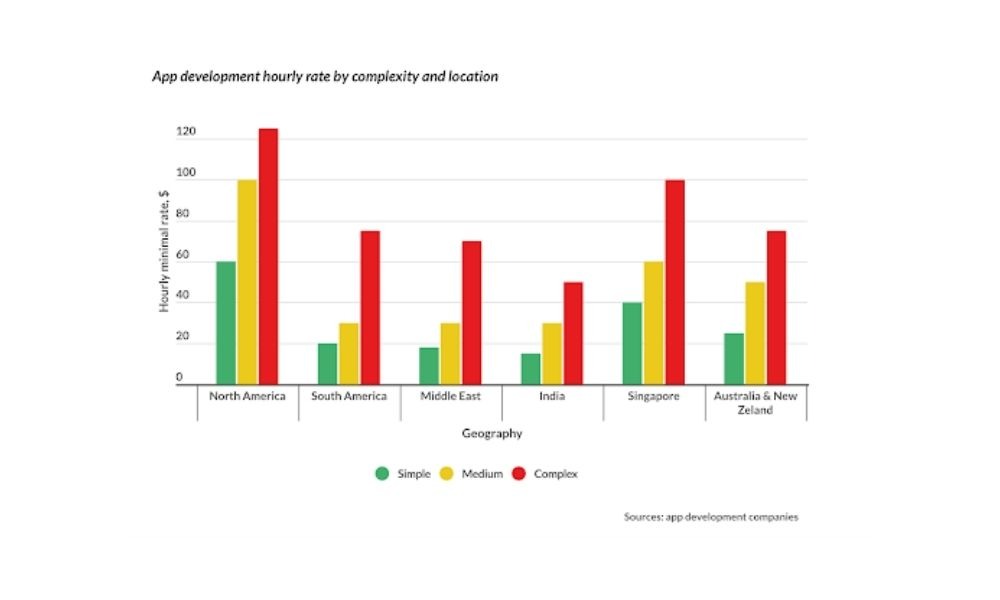
Moreover, marketing costs and other expenses incurred out of a negotiated contract should be counted in the total app cost.
How Much Does It Cost to Make an App?
Business of Apps, the leading news and analysis website for the app industry, collected data from numerous companies about how much is spent on their customer projects. The estimated range of spending on app development below are based on the complexity of projects:
- Simple app development project: US$40,000 to 60,000;
- Averagely complex app development project: US$61,000 – 120,000;
- Highly complex app development project: US$120,000 at a minimum.
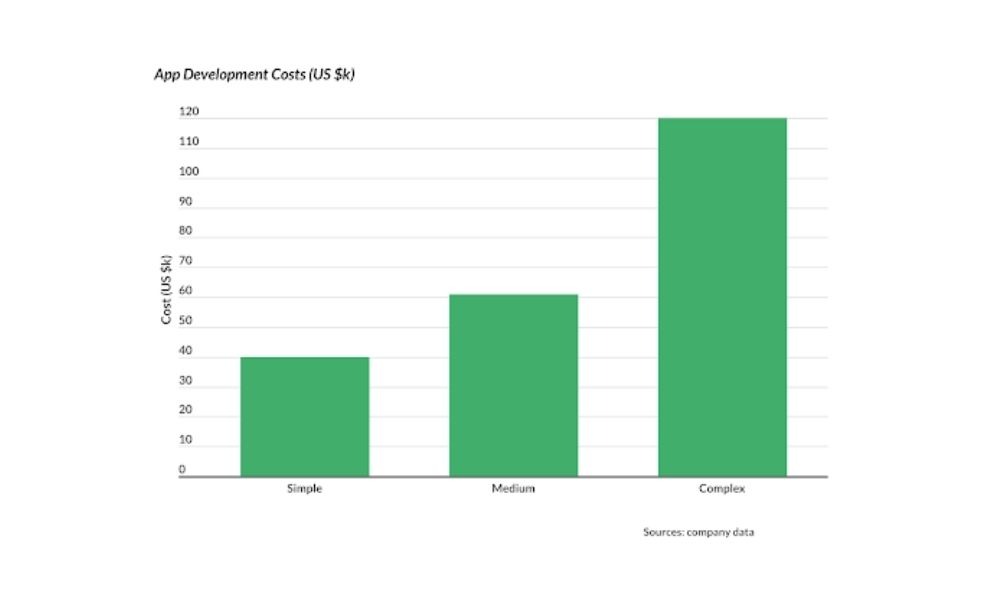
These findings, however, are not the same in many other companies. According to the 2015 Clutch survey, the total app development cost for complex functionality might reach US$727,500 provided the average hourly rate was $150. Meanwhile, other firms report that a large project with complex app development, design and support for at least two platforms may be at least US$300,000.
Inevitably, it’s hard to conclude an exact figure because how much your app project truly costs depends on the mentioned criteria. The given figures are just approximate for your company to have an objective view of app development costs in the market now.
The Truth Behind the Numbers
To clarify how the given figures are gauged, we need to break down the big question “How much does it cost to make an app?” into smaller questions. Particularly, the app development process includes various important phases (i.e. Planning, Design, Development, Testing & Launching, and Maintenance & Upgrade); understanding how different components in each stage are charged will help you have a ballpark calculation of your potential app cost.
Planning Stage
In this phase, both your company and an app developer will define project complexity, scope and other unknown criteria such as client-owned APIs. Even when you have no experience with app development, it’ll take more time to do market research on your own or with the support of the vendor. This helps your company determine whether an app can be a good vehicle to reach your goals. Apparently, those factors act as major determinants of the app planning cost.
According to the 2017 Clutch survey, the average cost of this phase was no more than US$25,000. Of which, over a half of surveyed companies said that they spent less than US$5,000 on discovery and research components.
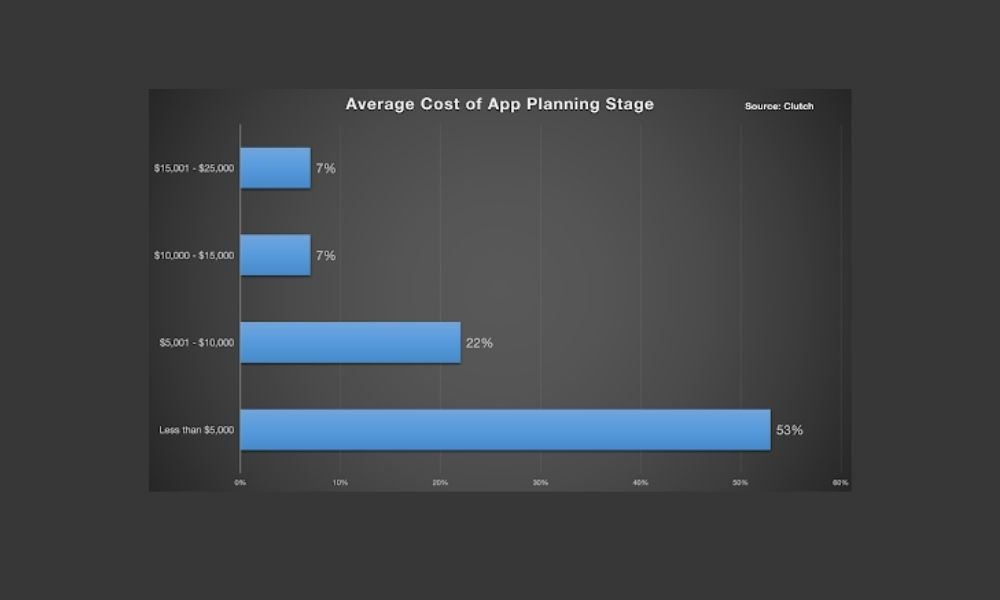
Design Stage
This app development phase involves designing an app’s visual architecture. This can be done through the following major tasks:
- Identifying your app’s platform based on whether you prefer a native or hybrid app. The former is separately designed for either iOS or Android, while the latter incorporates components working well on both operating systems;
- Focuse on UX/UI design that both meets user demands and complies with App Store or Google Play’s guidelines;
- Determining a number of pages and screens where your app will be displayed;
- Building the app’s wireframe that draws up the app layout.
This phase proves important because it’ll decide how attractive your app design may increase end-user retention and usage rates. The design cost depends on the project’s complexity and your design’s flexibility as well as aesthetic.
Below is an average range of the app design cost accumulated by Clutch:
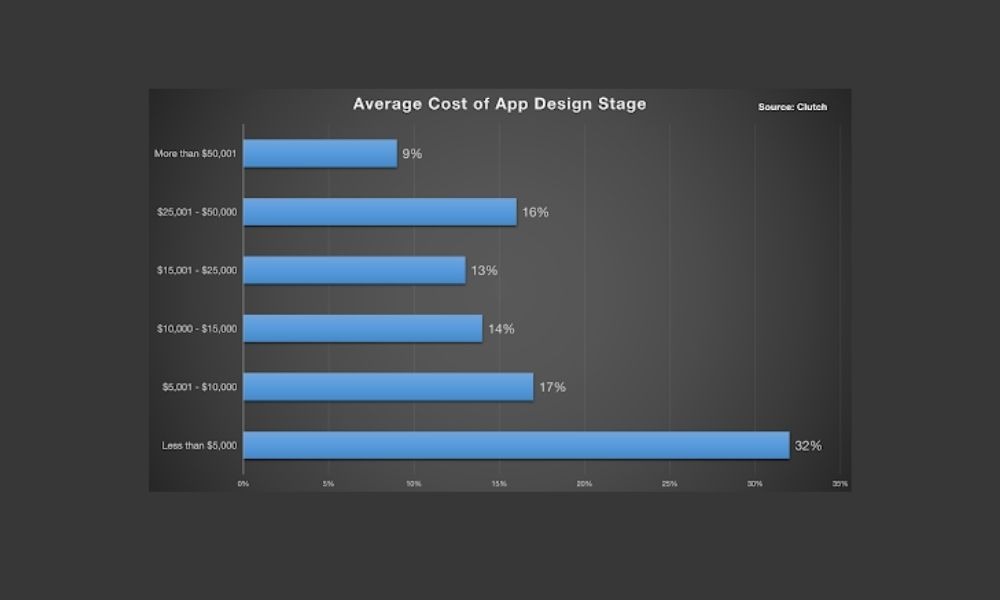
Development Stage
Major drivers behind the app development cost are often a number of developers involved in coding tasks and functionality in terms of its complexity, type and quantity. Apart from fundamental features such as user login or user engagement, advanced functionality as follows also contribute to pushing the development cost up:
- Payment systems;
- App management such as performance monitoring and data analytics;
- Infrastructure components including data storage, data encryption, third-party API integration, cross-platform sync, scalability and more;
- AI or ML technologies.
The more advanced components are integrated into your app, the longer this stage lasts and the higher the development cost is charged.
Testing and Deployment Stage
After the development phase, quality analyses will be manually or automatically conducted to detect and correct faults. The duration of testing mostly hinges on the app complexity and a large amount of functionality. Accordingly, highly secured apps or interactive games require more time, hence accompanying higher costs.
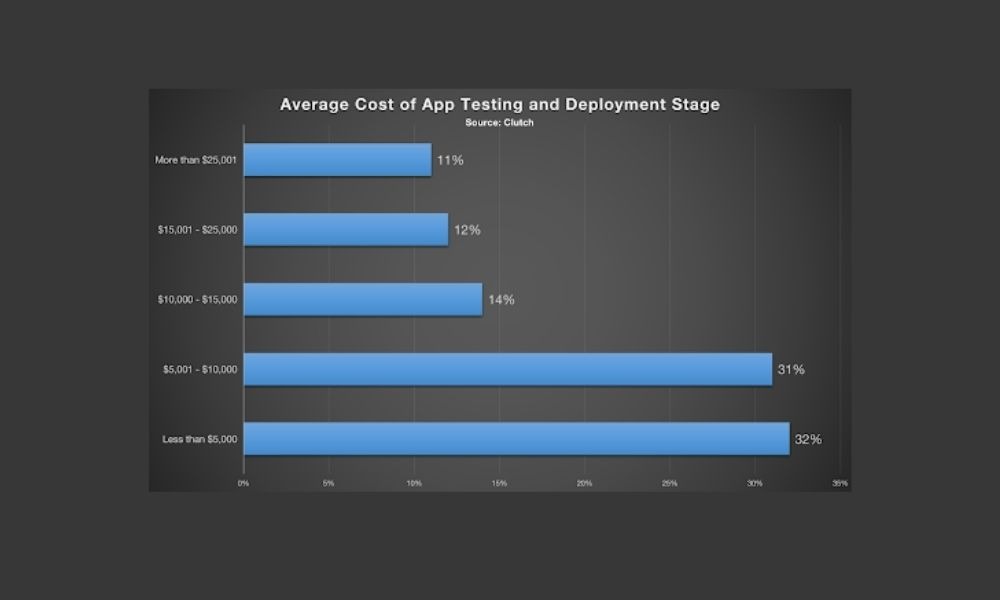
Once testing has been completed, an app will be ready for uploading to the App Store or Google Play. Normally, those stores also offer a licensing service to help you limit unauthorized or inappropriate access to your app. This will undoubtedly come with additional fees.
You should distinguish this licensing cost with the one you must pay for technologies or tools used during the design and development process.
Marketing and Maintenance Stage
No app is perfect with its first version, regardless of a huge investment in the initial project. Therefore, frequent updates and maintenance are essential to keep users engaged in the app and attract new customers. The maintenance cost may relate to hosting servers and even analytic tools.
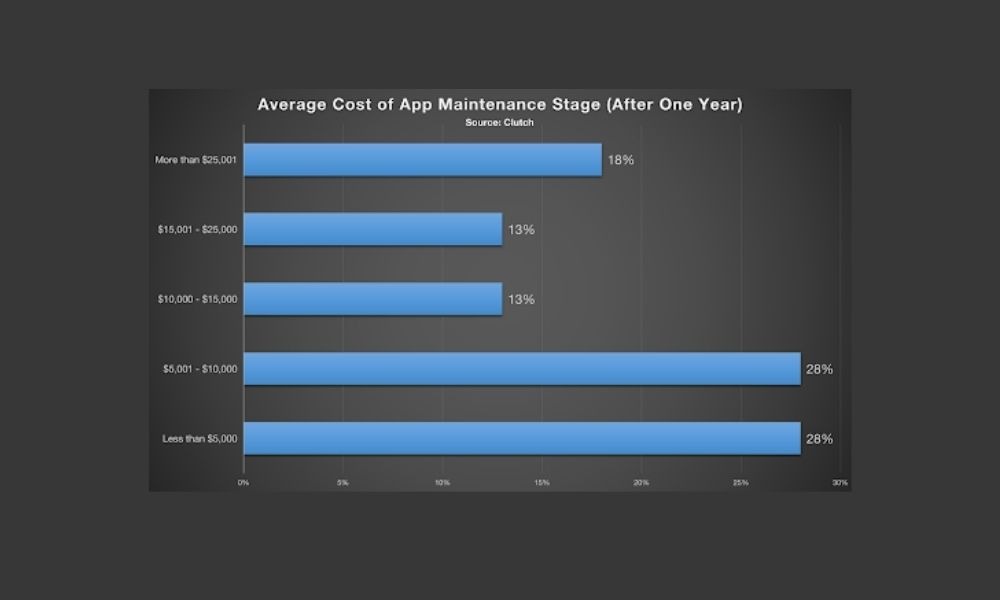
Marketing is needed as well to make your app renowned by the public. Cost Per Install (CPI) is among the most populous means to advertise the app. Accordingly, developers will put an advert on different media channels at certain prices to drive new installation. For example, placing an ad on iOS games costs US$4.3 per install whereas this figure is only US$1.15 on Android games.
Tips That Will Save You Money on Your App
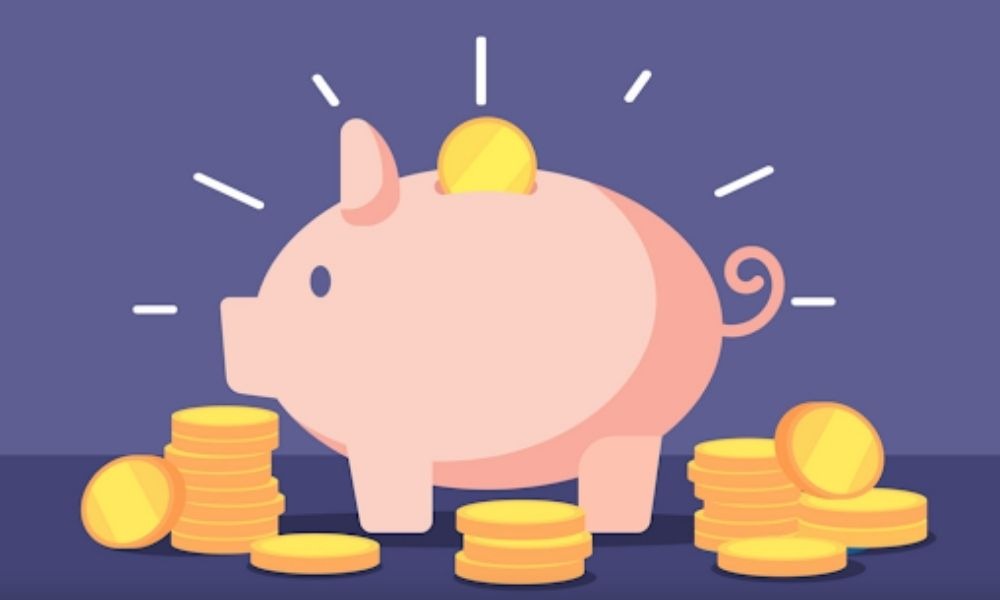
Optimizing costs on an app yet guaranteeing its efficient performance and appeal to end-users are always the ultimate goal of any company. Here are some common tips to help your company save money in app development:
Determine how much of the development process to conduct internally:
Instead of full outsourcing, many business owners let their internal team handle several pieces they excel at, for example, planning and design, to keep the costs down.
Choose a dedicated developer:
Whether your app involves a short-term or long-term development process, you always need a dedicated team that is willing to support the deliverable even after its launch. Lack of assistance from the developer will come with additional costs, especially when your app has problems like running sluggishly.
Grasp your business needs:
No app developer may read your mind, hence struggle to build proper solutions unless you give a vendor detailed requirements and specs about a potential app. To do so, you should understand your company’s existing problems, end-user demands, and even competitors’ digitalization strategies.
Keep your app simple:
It’s more advisable to focus on several core functions that bring your users the most value and make your brand stand out.
Consider the responsive design and cross-platform functionality
Responsive design facilitates smooth app performance across devices of all sizes. Meanwhile, cross-platform apps can be compatible with both iOS and Android. So these solutions prove more economical than developing apps separately for each operating system.
Communicate with the team:
Frequent interactions between your company and the outsourcing team are necessary to avoid misunderstandings that delay the whole work and incur extra costs.
Test your deliverable thoroughly:
End-user dissatisfaction with faulty products may directly affect your company’s revenues and even reputation. Also, debugging afterward costs you more. Therefore, testing should be done carefully before the product launch.
Conclusion
How much does it cost to make an app? The answer relies much on a wide range of components that arise in different app development phases. The mentioned figures in this article are only for reference. So you should work closely with an IT service provider to produce a more precise estimate.
With this latest technology now available, it is a much better option for you to switch to Designveloper. We offer all of the services needed for any size business and more – from web development, mobile application design, and consulting. We are here waiting for your call! Give us a call today if you want an estimate or just some advice on how we can help your company with these new developments in technology!
The post How Much Does It Cost To Make An App? The Truth Behind the Numbers appeared first on Designveloper.
December 29, 2021 at 05:17PM











Very informative blog on mobile app development and
ReplyDeleteweb app development.